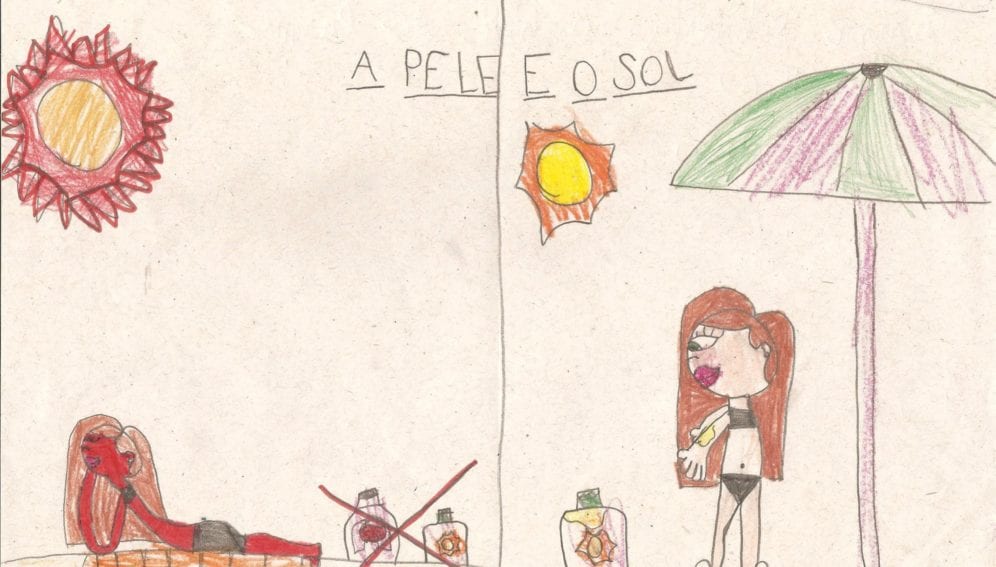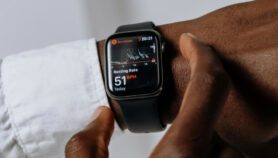Send to a friend
The details you provide on this page will not be used to send unsolicited email, and will not be sold to a 3rd party. See privacy policy.
[SÃO PAULO] Up to 80 per cent of our sun exposure happens before the age of 14, and in tropical countries such as Brazil hundreds of thousands of people a year are diagnosed with skin cancer as a result.
Over a hundred thousand new cases of skin cancer were recorded in Brazil between 2016 and 2017, according to the Brazilian Cancer Institute, and almost 6,000 were classified as melanoma, an aggressive form of the disease that can spread to other parts of the body.
Exposure to ultraviolet (UV) radiation during childhood significantly increases the risk of developing skin cancer later in life, according to the oncology surgeon João Duprat Neto, director of the Skin Cancer Center of the Brazilian A.C. Camargo Cancer Center.
The solution lies in early education, teaching kids to cover up and keep out of the midday sun, and a team of researchers have found an effective way to get this message across – using cartoons and comic books.
The aim was to encourage children to adopt and maintain behaviours that would guarantee adequate sun protection and the prevention of skin cancer later in life.
After the campaign, which was carried out between 2013 and 2014, the researchers conducted questionnaires in order to measure whether children had absorbed habits and knowledge about safer sun exposure after the campaign.
“Even in children who already had some knowledge about sun exposure, this knowledge improved even more after the campaign”
Paulo Ricardo Criado
"We found that more than 80 per cent of children knew that the sun might cause skin diseases and that it is important to use sunscreen, play in the shade, wear a hat, sunglasses and avoid the midday sun,” according to Paulo Ricardo Criado, a dermatologist from the Faculty of Medicine of ABC University (UFABC), who was lead author of the study published in the Journal of the European Academy of Dermatology and Venereology.
“Even in children who already had some knowledge about sun exposure, this knowledge improved even more after the campaign,” he tells SciDev.Net.
He points out the idea that sunlight may cause skin diseases increased from 84.8 to 91.2 per cent; avoiding sun exposure at midday, from 80.7 to 86.8 per cent; wearing clothes that cover arms and legs, from 49.6 per cent 57.3 per cent, and that sunscreens are needed even on cloudy days, from 46.5 to 65.5 per cent.
These findings came from a study that evaluated the cognitive and behavioural effects of a health education and diseases prevention project on 3,676 children aged between six and ten years old in schools in São Paulo state.
Visible light
The message is vitally important because even high strength sun cream sold to parents might not be enough to protect children from the effects of sun exposure.
That’s because it protects against the effects of UV light, invisible to the human eye, but does not prevent damage caused by visible light, according to Maurício da Silva Baptista, a biochemist from Sao Paulo University.
He is the main author of a study published in November 2014 in PLoS One that found that visible light can damage DNA indirectly by interacting with skin pigment (melanin), which absorbs some of the energy of the light and transfers it to oxygen molecules, generating highly reactive forms — so-called singlet oxygen.
This excited oxygen molecule, in turn, reacts with organic molecules, such as DNA, and degrades them. When this type of damage affects a regulatory gene of cell proliferation, the cell can begin to multiply uncontrollably, causing cancer.
Another study conducted by Brazilian researchers and published in February 2015 in Science, also found that under the action of visible sunlight, melanin could fragment and form very reactive chemical compounds that could damage the structure of DNA and facilitate the development of skin cancer.
These findings underline the need to change children’s behaviour to avoid sun exposure as much as possible.
There’s an economic impact as well. Between 2012 and 2016, the disease prevented over 17,000 people from working, according to a survey by the Brazilian Institute of Social Security.
To Criado, in light of this, such education programmes need to become more frequent in Brazilian schools, especially public ones.
“Health professionals could play an important role in supporting effective school policies and programs by educating school boards and policymakers,” he argues.
The studies published in PloS One and Science are the result of projects funded by FAPESP, one of the donors of SciDev.Net.
This article was produced by SciDev.Net’s Latin American & Caribbean desk.














